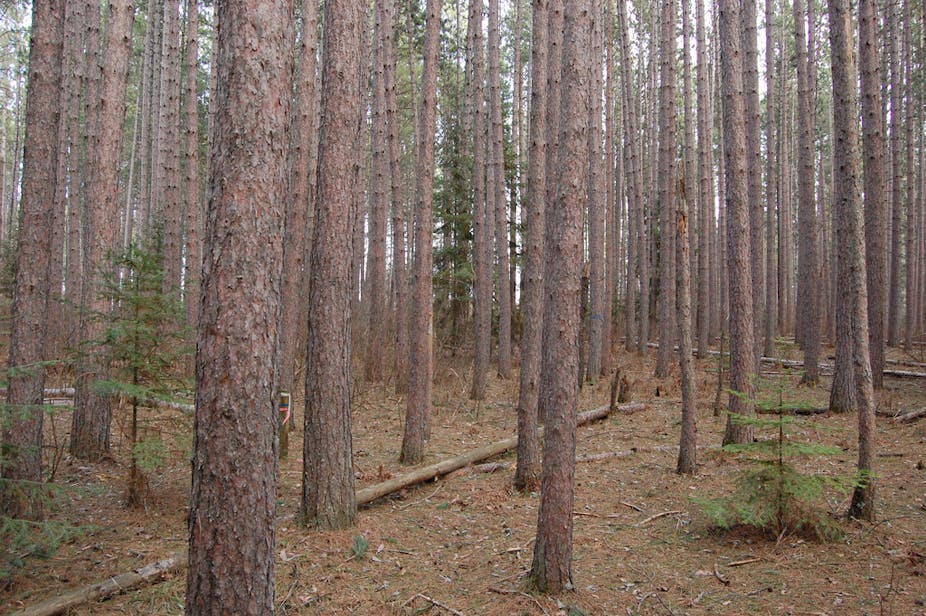DURBAN CLIMATE CHANGE CONFERENCE: One of the topics under discussion at Durban is the role carbon farming and other forestry measures could have in reducing emissions. With the possibility that negotiations will not bring about an agreement to replace the Kyoto Protocol, delegates are working on measures that could take place outside a climate agreement. The Conversation asked Dr Tim Cadman from the University of South Queensland about how much difference these measures could make.
Why are deforestation and forest degradation being discussed at the Durban conference?
With the phase out of the Kyoto Protocol commitment period in 2013, countries have been looking for alternative ways of reducing carbon emissions, methods that don’t rely on a new protocol.
One proposal is to reduce emissions from deforestation and forest degradation in developing countries (REDD+), and allow developed countries to count these as “offsets”.
Developed countries have so far pledged tens of millions of dollars to fund offset programmes, and are encouraging the investment of millions more to stimulate trade and investment in “forest carbon”. Developing countries that generally emit far less greenhouse gasses (with the notable exceptions of China and India) can benefit financially from this investment, and thus gain economically from market-driven sustainable development.
What approaches are being proposed at Durban? Will they work?
REDD+ works by “incentivising” forest conservation and the sustainable management of existing natural forests by funding development projects aimed at reducing forest degradation and deforestation. The focus is on maintaining carbon stocks in existing forests by reducing the impacts of logging. More importantly, it emphasises managing forests for non-timber products – such as water or tourism – or simply not logging the forests at all. This is sometimes known as “payment for ecosystem services”.
Another proposed approach is to create new “carbon” plantations. Here the timber would be removed, but carbon accounting (so the theory goes) keeps track of the carbon stored in the trees and released through logging. Other means of storing carbon include the maintenance of grasslands (soil carbon), and rotation cropping of non-timber products such as the castor oil plant.
Carbon plantations rely on being able to effectively count and allocate emissions saved. But carbon accounting is the subject of intense debate around what should and should not be counted, and has the potential to be abused.
Rather than entering into complicated accounting arrangements, it makes much more sense to protect natural forests from logging, than create more plantations (often established on cleared forest). Old growth forests and other natural ecosystems such as wetlands store far larger amounts of carbon than short-rotation crops of trees, which never reach maturity.
Non-extractive, “green” carbon, as this is sometimes called, is also far less open to abuse, as conserving forests from logging does not require such complex accounting to deal with the trees being put into (planting) and taken out of (logging) the system. There are also problems with the “just plant more trees” argument, as these trees are often planted on other precious ecosystems, such as tropical forests, or on land already being used for traditional purposes (such as subsistence farming or hunting) by local people.
What are the benefits and drawbacks of plantation forestry?
When done well, plantations can increase ecosystem services (such as water and soil); done badly they can lead to desertification, soil degradation and social disruption. Mixed species plantations of local tree species (rather than moncultures of exotic trees), well-managed and with the agreement of local communities, have the potential to contribute to sustainable development.
Are there benefits for biodiversity, or for communities, or are most approaches only concerned with carbon?
Many academics and commentators consider that emissions trading has created an “empire” of carbon management and control, whereby local communities and indigenous people are heavily impacted. Stories are emerging of tribal lands being cleared of people so trees can be planted for offset programmes, and in some instances people have been shot and killed trying to gain access. In other cases, threatened ecosystems such as wetlands have been cleared to make way for carbon plantations.
There can be benefits, however, especially when local communities are encouraged to develop regionally appropriate solutions to the loss of natural forests. These can involve community forestry and the establishment of fuelwood plantations, for example.
But it is essential to get good governance in place first. Carbon investment projects should not just land in a local community from “outer space” without first working with all stakeholders, landholders and rights-holders.
Simply leaving forests and other ecosystems alone, and paying local communities not to log or clear these areas, also helps protect bio-diversity, while new well-managed plantations on degraded lands can also have some positive impacts on bio-diversity.
Do you see any downsides to proposals coming out of Durban?
It all depends on the extent to which civil society, science and other social stakeholders – such as indigenous people – play a part in developing the governance systems under which emissions trading take place: not just business, banks and government. All players are needed for effective solutions to climate change.

